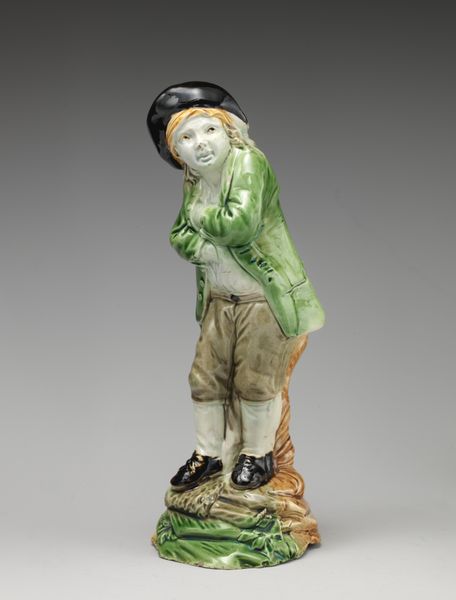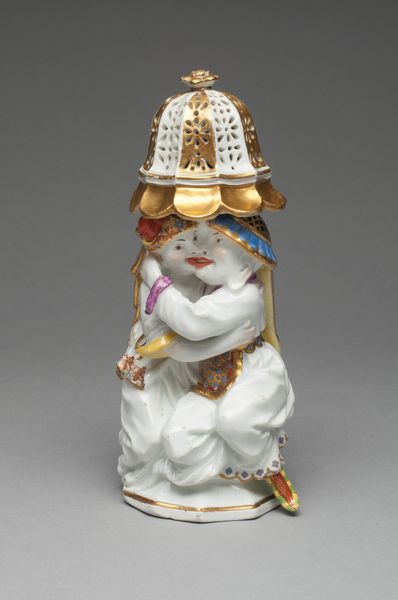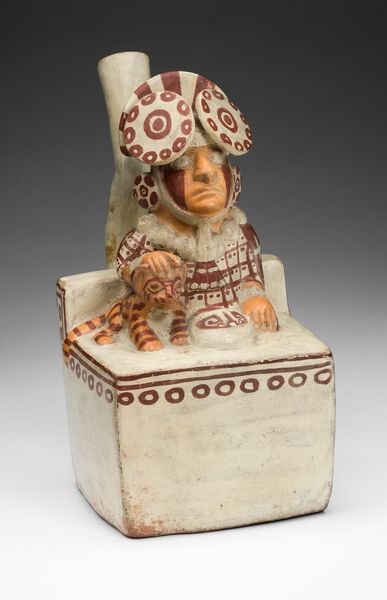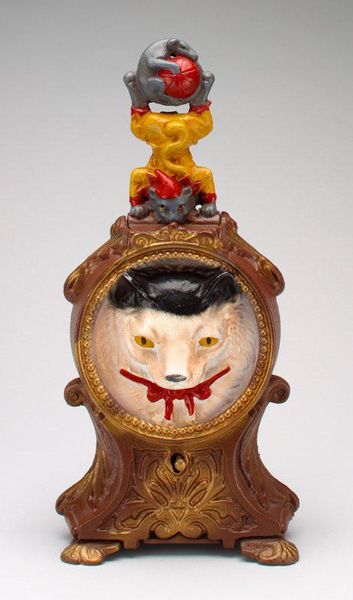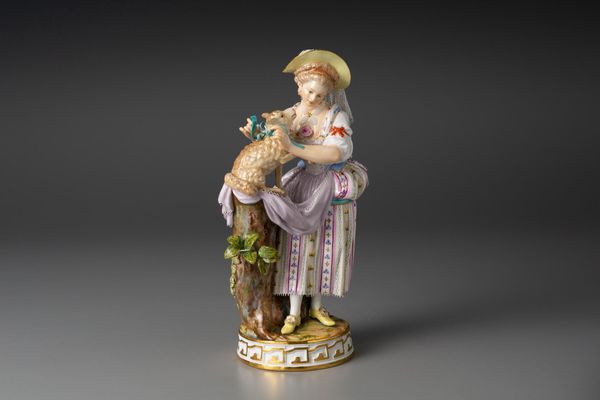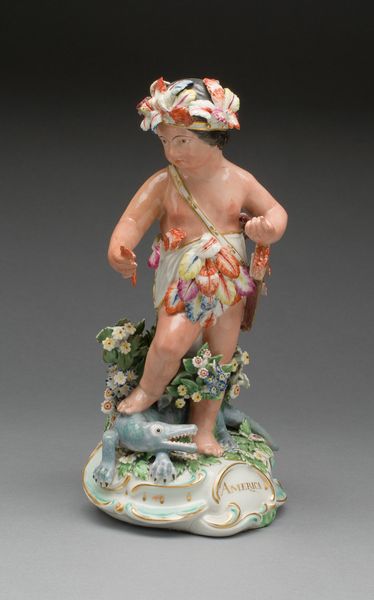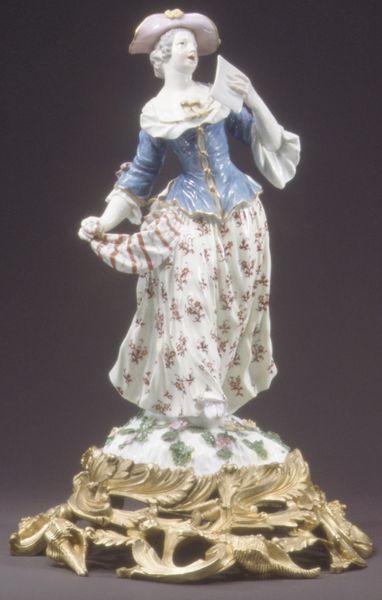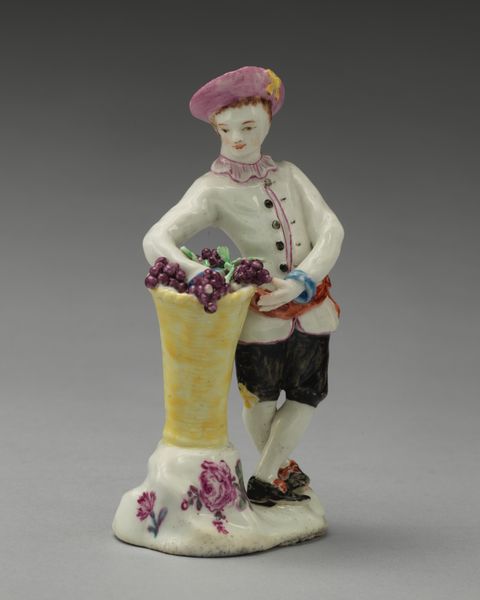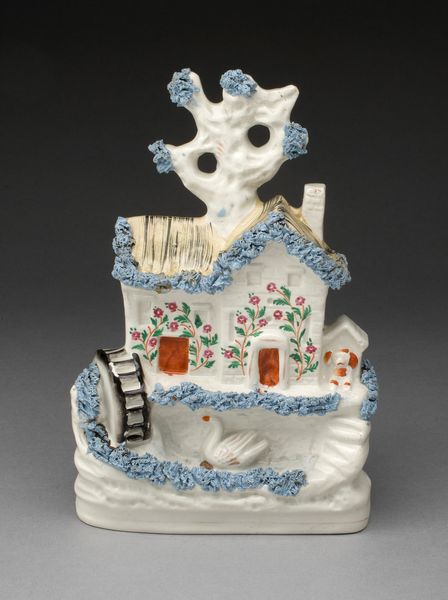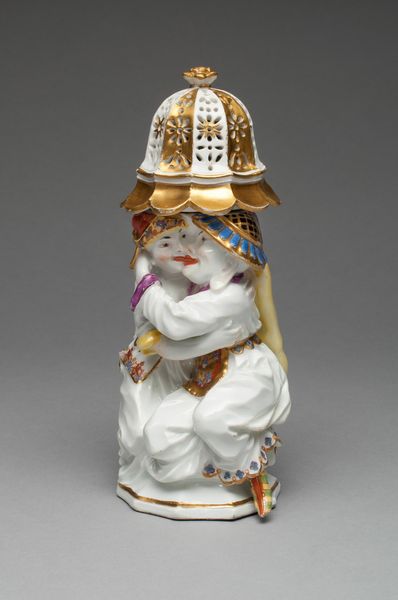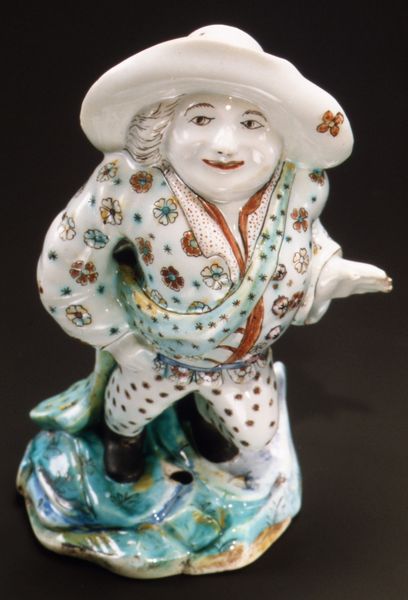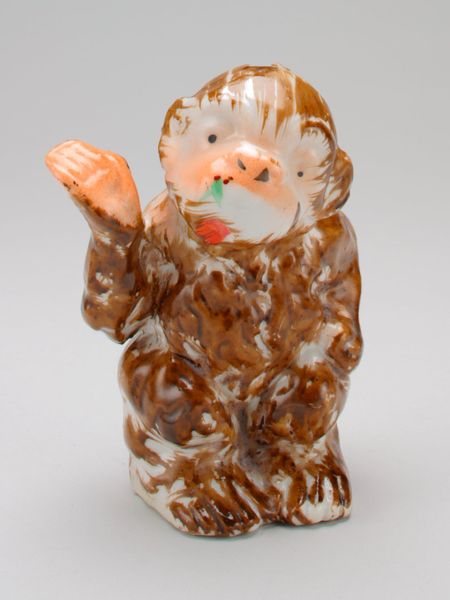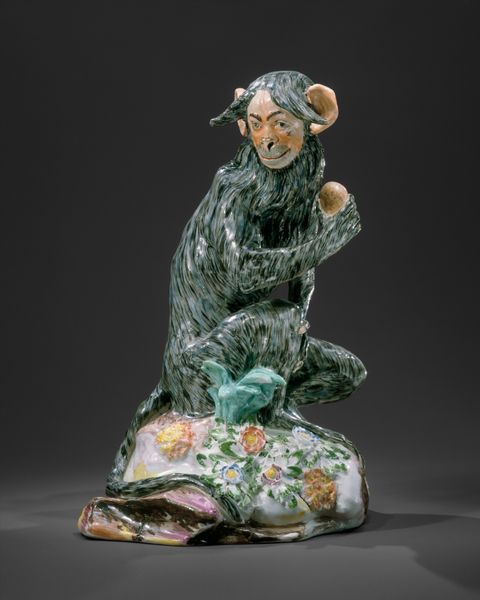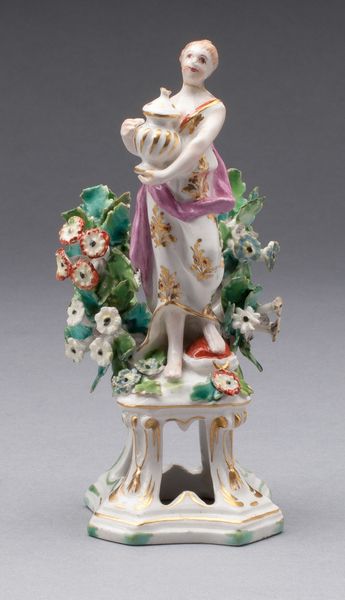
ceramic, sculpture
#
ceramic
#
figuration
#
stoneware
#
folk-art
#
sculpture
#
naïve-art
#
united-states
Dimensions: 7 15/16 x 4 1/4 x 3 1/4 in. (20.16 x 10.8 x 8.26 cm)
Copyright: No Known Copyright
Curator: This small ceramic sculpture, titled "-Sunbonnet Sue (or Dolly Dimple)- still bank," dates to around 1970. What’s your initial take on this charming object? Editor: Well, it's certainly nostalgic. A touch melancholic, even. There's something about the fixed gaze and faded colors that speaks to a bygone era of childhood innocence. I find myself thinking about the weight of cultural expectations often placed upon young girls. Curator: Indeed. This piece taps into the broader historical narrative of idealized femininity and domesticity prevalent in mid-20th century America. The ‘Sunbonnet Sue’ motif, popularized earlier in the century, often appeared on quilts and represented a very specific vision of childhood. We see her again here rendered as a humble “still bank." Editor: A still bank, signifying...saving for the future? Does this relate to consumerism aimed at children at this time? I'm interested in how its function plays a role in how we might perceive her narrative now. It looks quite weathered for its age, giving it an 'aged' quality. Curator: Absolutely. This reinforces the historical aspect of the bank’s function. It reflects a child's interaction with the broader economy through targeted advertisements. This intersects with broader sociological discussions around child labor, economic disparities, and access to education that informed policies and reform. The mass production of these banks speaks volumes. Editor: It also speaks to issues of accessibility and taste-making. Mass production shaped perceptions of value, both monetary and cultural, so while Sunbonnet Sue became a common motif, who benefitted from her proliferation, and whose voices were silenced in the process? We see so little individuality, yet that's also the point. It's representative, standing in for many. Curator: I concur. This seemingly innocent bank presents a layered opportunity to unpack broader cultural currents, institutional power dynamics, and philosophical considerations around the objectification of youth and gendered expectations of labor and identity within society. What feels simplistic is actually very complex. Editor: Ultimately, it pushes us to consider how representations shape not just identity but also inform participation within social systems and broader structures. Food for thought indeed, and I'll be mulling on the significance of simple forms such as this!
Comments
No comments
Be the first to comment and join the conversation on the ultimate creative platform.
